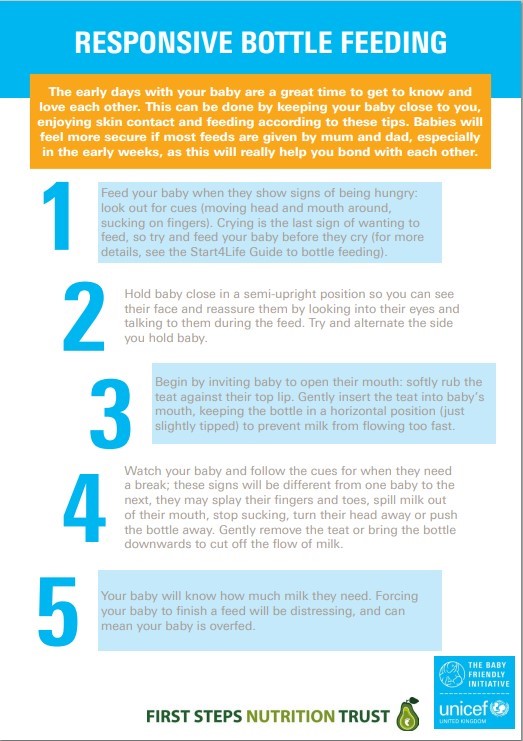This depends on a number of factors such as:
❓ why your baby is receiving milk
❓ any medical conditions they may have
❓ how long your baby will be receiving expressed milk for
❓ whether it is colostrum or more mature milk
❓ what your feeding goals are
Ask your midwife, neonatal unit staff, health visitor or family nurse to talk you through your options so you can make the choice that is most appropriate for your family.
You can also access useful information from La Leche League by clicking here.
If you are using a bottle to feed your expressed milk, you will be guided to do this as responsively as possible to help support the development of a close and loving parent-infant relationship
Responsive Bottle feeding
Responsive bottle feeding allows parents to build a close and loving relationship with their baby. Feeding your baby when they show feeding cues and limiting who feeds baby to the parents (particularly in the early days and weeks) helps with this relationship and enables your baby to feel safe and secure.
Bottle feeding responsively means –
- Offering a bottle in response to your baby’s feeding cues.
- Holding your baby close during feeds with lots of eye contact.
- Gently letting your baby take the teat into their mouth and allowing them to pace the feed.
- Not forcing your baby to finish the feed.
Remember, skin to skin contact with your baby is not just for straight after the birth. Having skin to skin contact releases the hormone Oxytocin – this is known as the love hormone. This will help you and your baby develop a close and loving relationship and in turn reduce the stress hormone. Having this bonding time with your baby is important not just for mum’s, but also for both parents.

